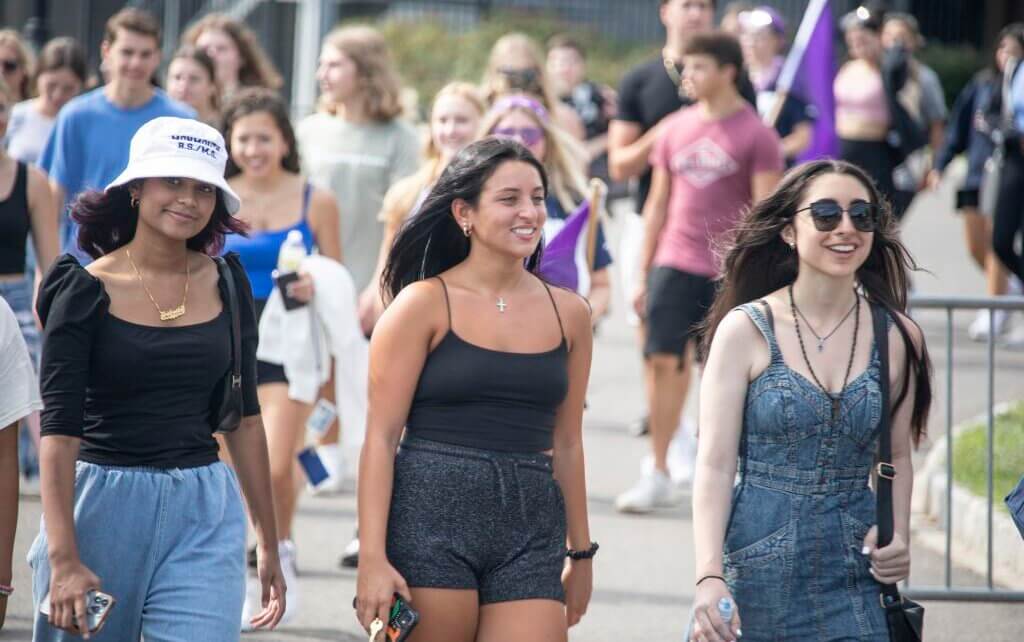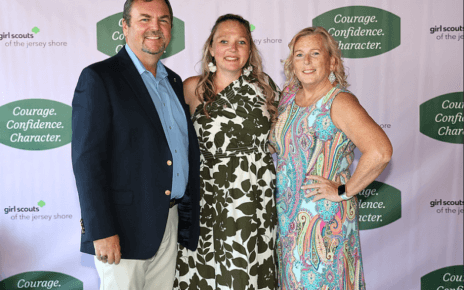Monmouth University’s newly-welcomed class of 2026 was lauded as the most diverse in the school’s history via a university-wide email by President Patrick Leahy, Ed.D. on Tuesday, Sept. 6. Leahy offered some perspective on the school’s changing demographics as it enters its 89th year of higher education, describing how the incoming class will propel the University’s goals moving forward.
“By being academically prepared and diverse, the class of 2026 is helping to advance the University’s academic experience and learning outcomes,” said Leahy. It was reported by the President that the class of 2026 was selected after Monmouth had received about 9,000 applicants with the highest GPA average in the school’s history (i.e., exceeding 3.6 in the aggregate), coupled with the highest SAT average exceeding 1,200.
In an interview with The Outlook, Leahy prompted the freshman class to sustain their streak of achievements while at Monmouth. He said, “Take your education seriously; learn as much as you can while seeking internships and creating connections with professors who will remain lifelong mentors post-graduation.”
Leahy also noted that while the new class’s scholastic success is a high priority, it is not his sole concern. “My hope is that the new class’s scholastic success is a high priority, it is not his sole concern. “My hope is that students associate this campus with a sense of belonging, finding comfort in various involvement opportunities, whether that be in sports, clubs, or activities on campus,” he said.
Additionally, the incoming freshman class is comprised of students from around the country and globe, representing 22 states and eight different countries. The University likewise welcomes nearly 200 transfer and 500 graduate students.
Leahy attributes Monmouth’s new reality to its welcoming spirit. “Monmouth University attracts more diverse students because as a community we welcome students from all different backgrounds,” he said. “For instance, we have an Intercultural Center on campus for everyone to come together and find a place where they belong…At Monmouth, we provide a close-knit community that welcomes and supports everyone’s future aspirations.”
Leahy’s sentiments were echoed by Madison Ducsai, a junior English student who recently transferred from Seton Hall University. “Even though I transferred from a school that was smaller than Monmouth, I don’t feel overwhelmed by the amount of people on campus because of the community’s closeness,” said Ducsai.
Bea Rogers, MBA, Director of Peer Assisted Learning, Retention, and General Education Assessment, reflected on the various scenarios students at Monmouth may find themselves. “Transfer students may learn how Monmouth is different from their prior institution, while graduate students, who may have been away from the college experience for a while, are offered a similar program more tailored to their needs.”
According to Rogers, there are also established programs to help assimilate new students to Monmouth even before they come on campus. She began, “First-year students were offered extensive in-person and virtual offerings throughout the summer that provided information such as how college is different from high school, how to study in college, and career preparation.”
Rogers continued, “They were also offered the opportunity to take the College Student Inventory (CSI), a questionnaire focused on their transition to college. The CSI provides an immediate, customized report with a Personal Success Plan, which outlines steps they can take and resources available to help increase their chances of success in their first year. Transfer and graduate students also receive programming designed to help them acclimate to college life.”
Claude Taylor, Center of Student Success’s Director for Academic Transition and Inclusion, commented on the resources available for new students beginning their career at Monmouth. “There are a wide range of resources through the Center for Student Success (CSS) that help students acclimate to college life. At the center of these resources are academic support services like tutoring services, writing services, the office of first year advising, transfer and undeclared services, and peer-assisted learning.”
Taylor added, “A diverse student body is an important way to encourage Monmouth students to step out of their comfort zones and engage in learning that empowers them to take on the challenges we face as a society.”
Dorothy Cleary, Director of Tutoring Services, expanded on Taylor’s dissection of readily available resources for students. “There is a whole host of resources to support students’ academic, emotional, and personal needs…Moreover, these services are built into students’ tuition so that there are no additional fees students have to incur.”
Jeffrey Jackson, Ph.D., Associate Professor of English, underscored the interconnectedness between the available, on-campus resources and the University’s broader commitment to its student body. “Since I arrived here in 2012, I have always thought of Monmouth as a supportive place that wants to see everyone succeed…We have high standards, but we also want students to get the help and attention they need. The small size and the beautiful campus environment contribute to that immensely,” explained Jackson.
Jackson is mindful of how this support should translate into the classroom as well. “As I start the new school year, I am doing so with a very pronounced and conscious goal of being as inclusive and welcoming as I can.”
Ducsai concurred, “From the very start, Monmouth has felt like home to me. In contrast to my previous school, the campus and the environment makes me feel like I belong.”



